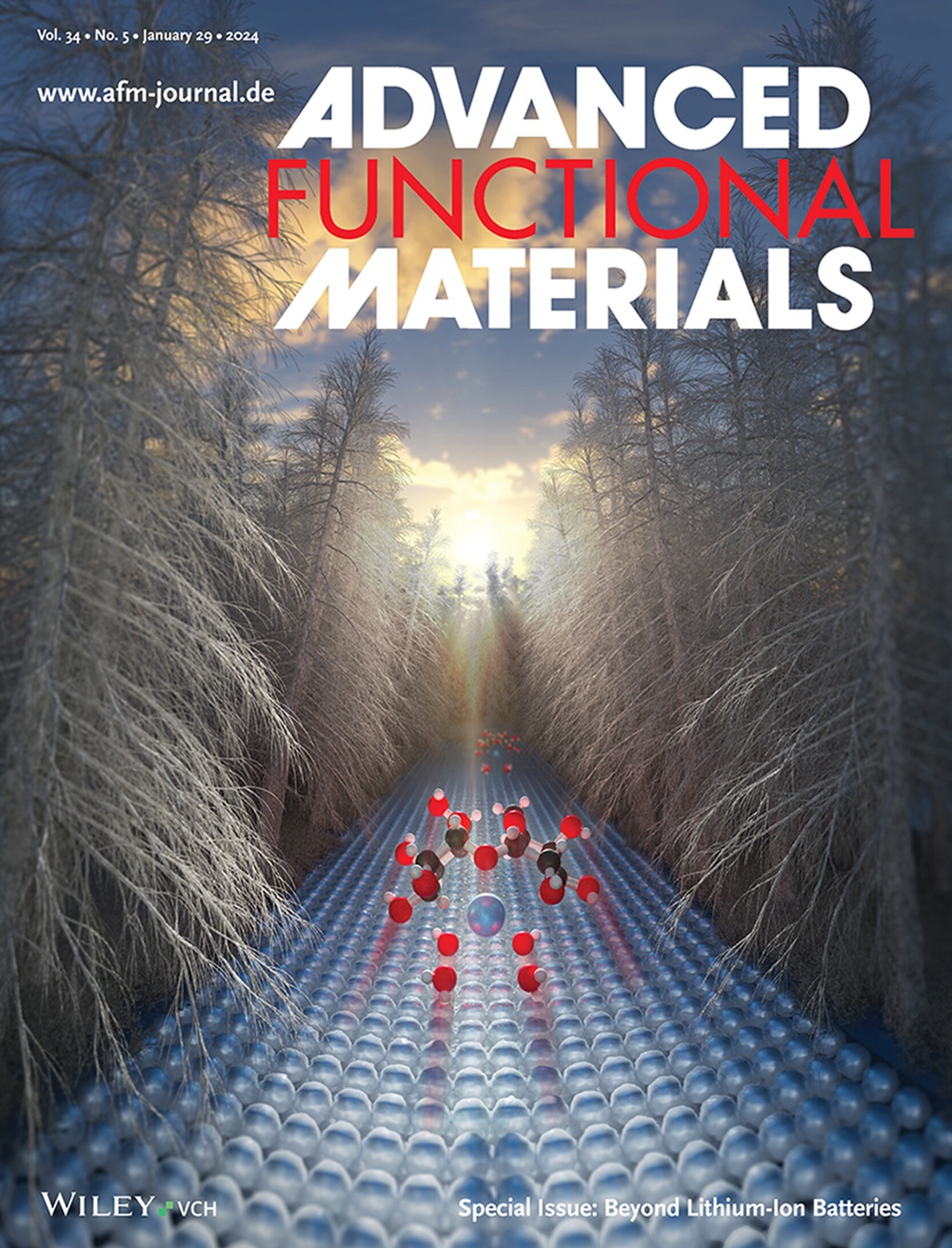Triple-Functional Amorphous In2O3 Anode Protection Layer Design for High-Performance Aqueous Zinc Ion Batteries
IF 18.5
1区 材料科学
Q1 CHEMISTRY, MULTIDISCIPLINARY
引用次数: 0
Abstract
Protective coatings for Zn anode are developed to suppress Zn dendrite growth, inhibit hydrogen evolution reaction (HER), and provide good anti-corrosion properties. However, preparing protective coatings with all three of these characteristics remains a challenge. In this study, a triple-functional amorphous In2O3 protective layer for Zn anodes is designed. The high redox potential of In/In3+ ensures the stability of the coating in aqueous electrolytes and effectively suppresses HER. Theoretical calculations indicate that the amorphous In₂O₃ protective layer has high Zn2⁺ affinity, which lowers the nucleation barrier for Zn2⁺ and suppresses dendrite growth. Furthermore, the anisotropy of this amorphous material provides homogeneous Zn2+ adsorption sites and enhances corrosion resistance. Consequently, amorphous In2O3@Zn symmetric batteries have excellent stability and a cycle life far exceeding that of bare Zn, showing the ability to undergo continuous stripping/plating at 1 mA cm−2 for >5400 h. At a current density of 10 A g−1, an amorphous In2O3@Zn//Ca-V2O5 full cell retains a specific capacity of 307.3 mA h g−1 after 5000 cycles (cycle retention: 76%). The successful preparation of In2O3@Zn provides a new approach for obtaining highly stable and long-life Zn anodes.用于高性能锌离子水电池的三重功能非晶 In2O3 阳极保护层设计
开发锌阳极保护涂层的目的是为了抑制锌枝晶的生长、抑制氢进化反应(HER)并提供良好的抗腐蚀性能。然而,制备具有上述三种特性的保护涂层仍然是一项挑战。本研究为锌阳极设计了一种具有三重功能的无定形 In2O3 保护层。In/In3+ 的高氧化还原电位确保了涂层在水性电解质中的稳定性,并能有效抑制 HER。理论计算表明,非晶态 In₂O₃保护层具有较高的 Zn2⁺ 亲和力,从而降低了 Zn2⁺ 的成核屏障,抑制了枝晶的生长。此外,这种非晶材料的各向异性提供了均匀的 Zn2+ 吸附位点,增强了耐腐蚀性。因此,非晶 In2O3@Zn 对称电池具有出色的稳定性和远超过裸锌的循环寿命,能在 1 mA cm-2 的条件下连续剥离/电镀 5400 h。在 10 A g-1 的电流密度下,非晶 In2O3@Zn//Ca-V2O5 全电池在循环 5000 次后仍能保持 307.3 mA h g-1 的比容量(循环保持率:76%)。In2O3@Zn 的成功制备为获得高稳定性和长寿命的锌阳极提供了一种新方法。
本文章由计算机程序翻译,如有差异,请以英文原文为准。
求助全文
约1分钟内获得全文
求助全文
来源期刊

Advanced Functional Materials
工程技术-材料科学:综合
CiteScore
29.50
自引率
4.20%
发文量
2086
审稿时长
2.1 months
期刊介绍:
Firmly established as a top-tier materials science journal, Advanced Functional Materials reports breakthrough research in all aspects of materials science, including nanotechnology, chemistry, physics, and biology every week.
Advanced Functional Materials is known for its rapid and fair peer review, quality content, and high impact, making it the first choice of the international materials science community.
 求助内容:
求助内容: 应助结果提醒方式:
应助结果提醒方式:


